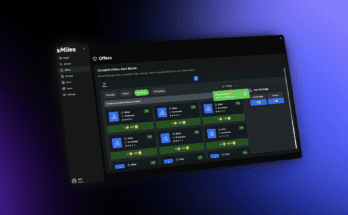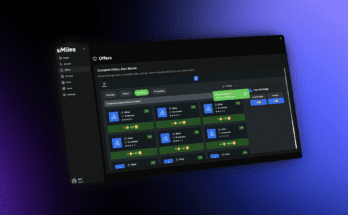Do you want to know about the facts of the somatic approach intuition? Find out about this topic here and learn about the details.
Wilhelm Reich was one of the first somatic practitioners in the western world who diverged with Freud in the 1930s. Reich spoke of the significance of the energy body and non-verbal communication to transformative healing. The ceremonies of indigenous people lead to an intuitive body, which plays an integral part in consciousness.
In ancient times, both Japanese and Chinese sages had many references to an intuitive stage of somatic knowing. Soma refers to our whole living body. Somatics is a part of both art and science for personal and collective soma. The wholeness has a physical world of our sensations, weight, images, thoughts, attitudes, yearnings, dreams, and language. Somatics proclaims the human form as space where all humans act, perceive, feel, and think and where emotions and moods occur.
Viewing with Our Body
In this explanation, we will understand that the body is the field where we build our trust and intimacy, create family, do meaningful work, have communities, bring a world in language, and live with our spiritual longing. In this view, human beings are known as a unity that expresses linguistic, biological, social, historical, and spiritual lives. Our intuitive inmate space is inextricably linked to our living tissues. To get hold of our intuition, we have to be in touch with the life energy that goes through us. In other words, we have to live in our bodies entirely.
To connect with our intuition, we have to go through our body’s clairsentience. Its ‘Clair’ means exact, and ‘sentient’ means capable of feeling. So we can use clairsentience to see with our bodies. A good camp in the forest can assist heavily with your clairsentience.
To know more about clairsentient, check out this link- https://mediumfinder.com/clairsentient/.
Experimental Intuition
Intuition has two types; the first one is based on knowledge and experience— for instance, a coach who has achieved a level of expertise via study. The coach who has grown the level of mastery through years of research, time, and experience will ‘intuitively’ understand what clients will do or say next and what move they will take in that particular moment. Or else, they would do what they are thinking. It is very similar to grandmaster chess, who played and acknowledged many thousands of chess matches to help them predict the opponent’s next possible move.
Best martial arts masters have a pretty similar example. They can sense where an attack is coming from even before their opponents make their move. This ability might seem like magic or some unique power that seems somewhat supernatural. While the martial artist may have some predisposition for the skill, in reality, that specific type of ‘intuition’ is based on years of rigorous training, practice, and study embodied by the practitioner. Their training and experience allow them to read their opponents’ very subtle movements and then fight back skillfully.
Clairsentience
The second form of intuition is deeper and more impactful for the client. The coach will be able to access the client’s unconscious impressions. That indicates that they have developed the capacity to feel and sense the client’s underlying habits of motion, thought, motivation, and behaviors. All that can be combined with the first distinction of intuition that is based on time and experience. Do not let your client feel stress at all. But it goes further in that one can get into a more profound depth with the client. In this form, the coach can mutually feel what it is like to live as the client.
In clairsentience, an intuition can arrive via a feeling, an image, or a sense and can be acted upon spontaneously or directly without any logic. For example, when the client first gets the coaching space, the coach may feel a sensational shock at the edge of their skin, making them uncomfortable. The coaches pick up something when they talk to their clients. They will ask about the client’s mood and watch if their intuition is correct, or they will continue to interact with the client and look for any underlying mood that is causing them to be uncomfortable.
Another example will be when the coach finds themselves suddenly asking questions that were not planned or sometimes even unconsidered. She might be surprised to find where this interest came from, but when they dwell on it, they will see the particular image, which will appear in their energetic field that continuously made them ask questions.
Keep in mind that I am talking about clairsentience, which is the intuitive capacity to sense and feel deeply. In clairsentience, we get things in our body as a feeling, image, or sense. It is a physical experience, and it is vital to learn how to acknowledge these impressions and not point out one’s wishes, which may summon fear upon the client. Sometimes it can be harmful when the coaches think their intuition is real and indisputable.
To fully utilize intuition in coaching, knowing its fundamentals is essential. To know intuition as ‘truth’ is both unethical and very egocentric. The training facility of intuitions must have proper boundaries, and they should properly respect the client’s views and interpretations.
Training The Intuition
The intuition can be trained and embodied, and people can develop their clairsentience to use it skillfully later. We all are rational beings; we can learn anything. We always rely on our brain processes, but we deny our messages from our soma. To develop the clairsentience somatically in training coaches, emphasize these points:
- Be respectful to the client, be clear with them, and notify them when moving from your intuition. It’s tough to move to another person’s space and listen from there. Withdraw your attention as soon as possible when the client is uncomfortable.
- Whether you have grounding for your intuition assessments or not, do not let your clients know about your assessments.
- Learn to differentiate between sensing unconscious impressions from your intuition body and express your desires and fears.
- Learn to articulate and interpret your intuitions so that they can come relevant to your client.
Clairsentience is a skill that can be mastered through proper dedication. To understand this fully, learning in a community would be very helpful as you will meet competent teachers.
FAQ
What is clairsentience?
In clairsentience, an intuition can arrive via a feeling, an image, or a sense and can be acted upon spontaneously or directly without any logic. For example, when the client first gets the coaching space, the coach may feel a sensational shock at the edge of their skin, making them uncomfortable. The coaches pick up something when they talk to their clients. They will ask about the client’s mood and watch if their intuition is correct, or they will continue to interact with the client and look for any underlying mood that is causing them to be uncomfortable.
Additional Resources:
Kratom
Nutrition
CBD Salve
CBD Massage Oil



